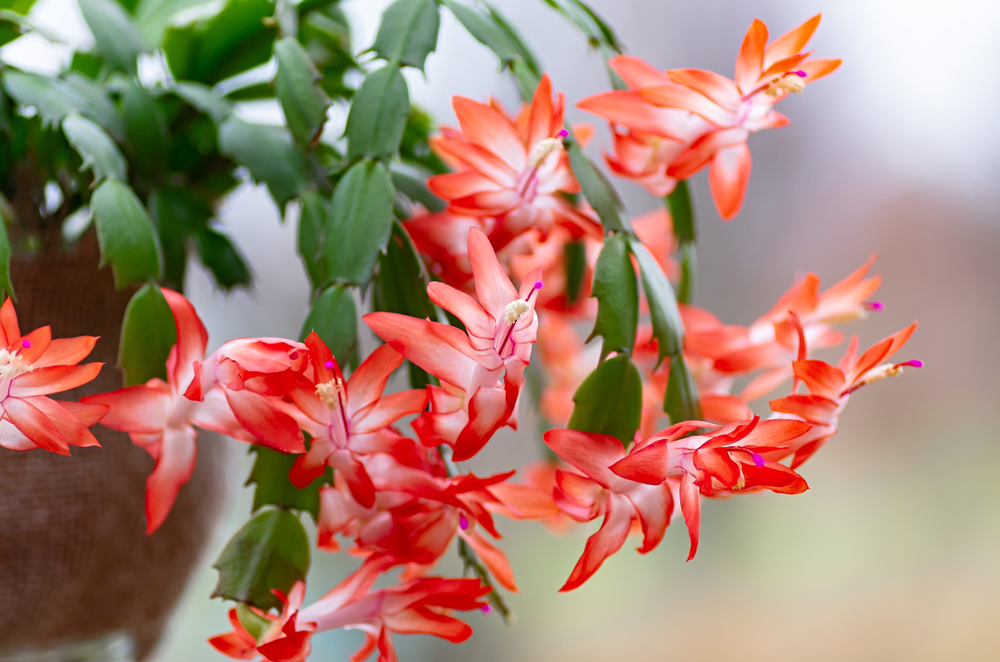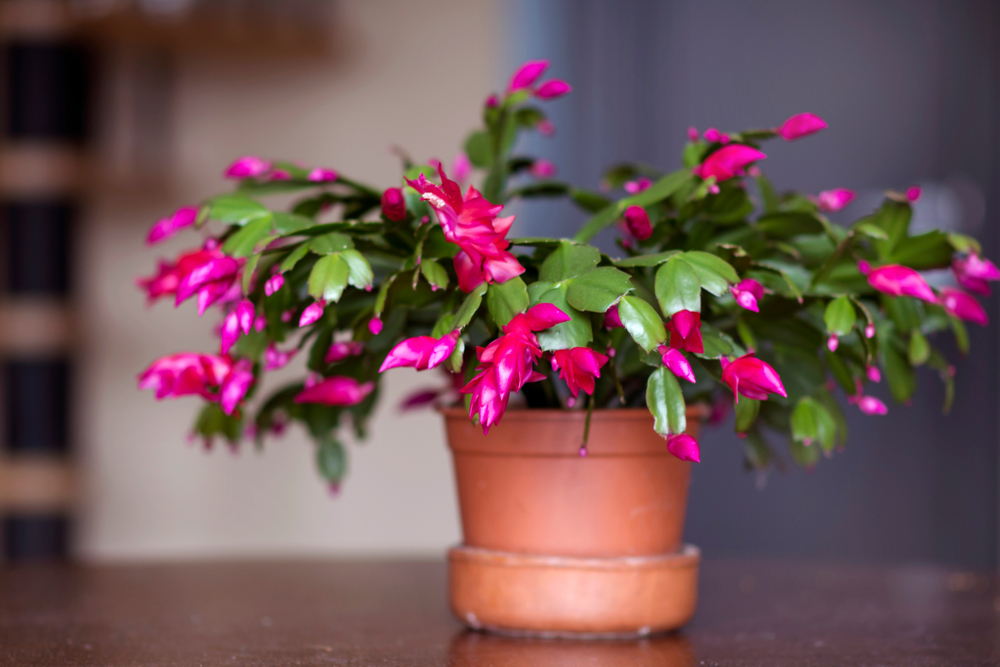During the holiday season, friends and families love to give gifts and share precious items with each other. For some people, this doesn’t just mean baking cookies or exchanging gifts; it also means sharing plants.
Even those who aren’t plant lovers pick up a holiday cactus, such as the Thanksgiving cactus, and bring it with them to the family dinner as a gift to the host. But what happens if you pick one up and don't have the first clue about how to care for it? Or you give it to a relative who's never managed to keep a plant alive? Thankfully, these beauties are easier to care for than you might think. Our helpful guide will help you meet all of this holiday plant's needs.

What is a Thanksgiving cactus?
If you plan on giving this plant as a gift or you’ve received one, you’ll likely want to be sure you know how to care for it. These pretty cacti are native to the tropical climates in Brazil and aren’t your typical cactus. They prefer higher humidity levels and soil moisture and don’t like direct sunlight. However, they produce beautiful blooms that come in a range of colors, including pink, purple, white, and peach.
Unfortunately, Thanksgiving cactus often get confused with Christmas cactus. This is mainly because they look so alike and also because they’re mislabeled in stores. The best way to tell if you have a Thanksgiving cactus or a Christmas cactus is by looking at the leaves. The Thanksgiving cactus will have sharp and pointy sides on its segmented leaves, while the Christmas cactus has more rounded sides. Luckily, even if you mislabel these plants, they thrive in similar conditions.

How to care for a Thanksgiving cactus
Here is how to care for this plant so that it can live its best life and provide you with plenty of pretty blooms. Just remember that the Thanksgiving and Christmas cacti like similar conditions, so if you have incorrectly identified which one you have or you just aren’t sure, these care tips will work for both plants.
Step 1: Light.
Unlike most cacti, the Thanksgiving cactus prefers partial light to shady spots. Too much sun can cause the leaves of this plant to wash out and eventually die off. However, when fall rolls around, move the cactus to an area with bright indirect light to help encourage it to bloom.
Step 2: Water.
Although it doesn’t like its roots to sit in water, this cactus does want to be in moist soil. Therefore, it’s important not to let the soil dry out in between waterings, and be sure to thoroughly saturate the soil when you do water.
Step 3: Soil.
The Thanksgiving cactus is adaptable to most soil types but prefers soil that holds moisture a little more than your typical cactus. You could add a bit of peat moss to your generic potting mix to help the soil retain more water. Just be sure that there is a drainage hole in the pot and that the soil isn’t holding onto too much water.
Step 4: Fertilizer.
Feed this cactus during the growing season with a water-soluble or granular fertilizer. Without enough food, the cactus won’t be able to produce those pretty flowers it’s so famous for.
Step 5: Humidity and temperature.
Ideally, the Thanksgiving cactus likes the humidity level to be above 50%. This is much higher than desert cacti, but remember, they’re native to tropical and subtropical climates. The closer you can mimic those conditions, the happier your plant will be. They also prefer hotter temperatures, but they can deal with temperatures as low as 60 degrees Farhrenheit. To ensure your plant isn’t too cold or too dry, you’ll want to avoid placing it near a drafty door or window and steer clear of air vents as well.

FAQs
Is the Thanksgiving cactus an indoor or outdoor plant?
Although it’s primarily grown indoors, the Thanksgiving cactus can thrive outdoors in zones 10 to 12.
Is this cactus toxic?
These plants were once thought to be highly toxic to pets; however, more recent studies show that they’re only a low toxicity threat to pets. This means it’s best to keep them out of reach of pets, but if your furry pal takes a bite from it, there’s no need to panic.
Now you have the tools you need to care for your Thanksgiving cactus, and you’ll be able to educate friends and family on how to care for theirs. Be sure to look for the pointy edges on the leaves to identify it as a Thanksgiving cactus correctly, and remember that it’s native to tropical climates and will thrive with more water and humidity than desert cacti.
Editors' Recommendations
- Stunning Monstera plants that you should add to your indoor plant collection
- Beautiful, low-maintenance pothos varieties to add to your plant collection
- A mini cactus can be an adorable addition to any garden – here’s how to care for it
- Plant of the week: Peperomia caperata – learn how to care for the emerald ripple peperomia
- A guide to caring for the fiddle-leaf fig, everyone’s favorite dramatic plant



